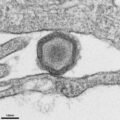
In a groundbreaking advance in the battle against Parkinson’s disease, researchers have unveiled a novel molecular pathway through which the epidermal growth factor receptor (EGFR) acts to mitigate one of the disease’s most destructive features: the aggregation of α-synuclein proteins in neuronal cells. This discovery shines new light on the intricate molecular dance that governs neurodegeneration and opens promising avenues for therapeutic development to halt or even reverse the progress of this debilitating disorder.
Parkinson’s disease, a relentless neurodegenerative condition affecting millions worldwide, is characterized by the accumulation of misfolded α-synuclein proteins that cluster into toxic aggregates, ultimately leading to the death of dopamine-producing neurons in the brain. These aggregates have long been recognized as key pathological hallmarks, but the cellular machinery that modulates their formation and clearance has remained elusive. Now, scientists led by Huang, YY., Lin, SJ., and Chiang, WY. have identified that EGFR, a receptor tyrosine kinase conventionally implicated in cell growth and differentiation, exerts a protective role by phosphorylating the molecular cochaperone DNAJB1, thereby suppressing α-synuclein aggregation.
The crux of this discovery lies in the intricate phosphorylation process of DNAJB1, a critical member of the Hsp40 family of molecular chaperones. Molecular chaperones have a pivotal role in maintaining protein homeostasis by ensuring proper protein folding and preventing misfolded protein accumulation. In Parkinson’s disease pathology, the failure of these quality control systems contributes significantly to α-synuclein pathology. By employing advanced proteomic techniques and phosphorylation site mapping, the researchers determined that activation of EGFR triggers the addition of phosphate groups to DNAJB1 at specific serine residues, altering its conformation and functional dynamics.
.adsslot_JZxwUas6Do{ width:728px !important; height:90px !important; }
@media (max-width:1199px) { .adsslot_JZxwUas6Do{ width:468px !important; height:60px !important; } }
@media (max-width:767px) { .adsslot_JZxwUas6Do{ width:320px !important; height:50px !important; } }
ADVERTISEMENT
This modification enhances the ability of DNAJB1 to interact with α-synuclein monomers and oligomers, effectively preventing their assembly into toxic fibrils. Functionally, this means that phosphorylated DNAJB1 serves as a more potent chaperone, guiding misfolded α-synuclein peptides towards refolding or degradation pathways rather than allowing them to accumulate pathologically. Intriguingly, in cellular and animal models recapitulating Parkinson’s disease, pharmacological stimulation of EGFR corresponded with a marked decrease in α-synuclein aggregates within dopaminergic neurons, accompanied by improved neuronal survival and motor function.
These findings are particularly notable given the longstanding association of EGFR pathways with cancer biology; this study reframes EGFR as a neuroprotective entity within the central nervous system. It challenges prevailing paradigms and underscores a context-dependent role for EGFR—a receptor whose activation must be finely tuned to balance proliferative cues with neuroprotective demands. Moreover, this EGFR-DNAJB1 axis may act as a regulatory checkpoint, linking external growth factor signals to the intracellular maintenance of proteostasis.
Further biochemical analyses revealed that the phosphorylation of DNAJB1 triggers a conformational switch that not only improves its chaperone capacity but also facilitates its recruitment of other heat shock proteins such as Hsp70. This recruitment creates a multi-chaperone complex optimized for the recognition and clearance of aberrant protein aggregates. The dynamic assembly of these complexes illustrates a highly coordinated molecular response within neurons designed to mitigate proteotoxic stress, a hallmark of Parkinsonian pathology.
Delving into the mechanistic implications, the study also explores how EGFR activation is itself regulated under physiological and pathological conditions. The authors propose that neuroinflammatory signals prevalent in Parkinson’s disease might impair EGFR function, thus compromising the phosphorylation state of DNAJB1 and tipping the balance toward aggregate accumulation. These insights signify that restoring EGFR signaling pathways could represent a dual therapeutic strategy—both rectifying impaired growth factor signaling and directly enhancing protein quality control.
The translational potential of these discoveries is immense. Current treatments for Parkinson’s disease are predominantly symptomatic, addressing motor dysfunction without halting disease progression. By leveraging the EGFR-DNAJB1 pathway, there is now a molecular target poised for drug development aimed at the root cause of neuronal degeneration. Small molecules or biologics designed to selectively activate EGFR or mimic its phosphorylation effect on DNAJB1 may serve as next-generation therapies, potentially reshaping disease trajectories.
In experimental models, the researchers employed gene editing techniques to create phosphorylation-deficient DNAJB1 mutants, which resulted in exacerbated α-synuclein aggregation and accelerated neuronal loss. Conversely, phosphomimetic mutants that mimic a permanently phosphorylated state exhibited remarkable resilience against α-synuclein toxicity. These genetic manipulations confirm the causative role of DNAJB1 phosphorylation in modulating disease phenotypes and validate it as a crucial node in Parkinson’s proteinopathy.
The study also ventured beyond cellular models, utilizing transgenic rodents harboring human α-synuclein mutations linked to familial Parkinson’s. These animals, when treated with EGFR agonists, manifested significant reductions in cerebral α-synuclein inclusions and showed improved motor performance on established behavioral assays. This preclinical evidence bolsters the clinical relevance of the molecular findings and paves the way for human trials.
Equally important is the broader implication for neurodegenerative diseases beyond Parkinson’s. Protein misfolding and aggregation are shared pathological features in disorders such as Alzheimer’s disease, Huntington’s disease, and amyotrophic lateral sclerosis. The identification of EGFR-mediated phosphorylation of chaperones presents a conserved regulatory mechanism that might generalize to other proteopathies, vastly expanding the impact of these findings.
This paradigm-shifting research underscores the necessity of integrating cell signaling pathways with proteostasis networks to fully comprehend neurodegeneration. It challenges researchers to reevaluate old receptors in new contexts and highlights the power of precision molecular targeting. The unraveling of the EGFR-DNAJB1 axis exemplifies how understanding post-translational modifications can unlock therapeutic potential hidden within the cellular proteome.
Despite these promising results, several questions remain. How is EGFR signaling modulated temporally during disease progression? Are there additional cochaperones or phosphorylation targets that collaborate with DNAJB1? What are the long-term effects of manipulating EGFR activity in the human brain, given its complex roles? Addressing these questions will be paramount in translating these insights from bench to bedside.
In conclusion, the discovery that EGFR phosphorylates DNAJB1 to suppress α-synuclein aggregation reshapes our understanding of Parkinson’s disease pathogenesis and offers a tangible target for intervention. As aging populations rise globally, the urgency to develop effective neuroprotective strategies intensifies. By illuminating a novel cellular mechanism capable of counteracting toxic protein aggregation, this research provides hopeful momentum towards disease-modifying therapies, bringing us a step closer to alleviating the burden of Parkinson’s disease.
Subject of Research: The molecular mechanisms through which EGFR-mediated phosphorylation of DNAJB1 regulates α-synuclein aggregation in Parkinson’s disease.
Article Title: EGFR phosphorylates DNAJB1 to suppress α-synuclein aggregation in Parkinson’s disease.
Article References:
Huang, YY., Lin, SJ., Chiang, WY. et al. EGFR phosphorylates DNAJB1 to suppress α-synuclein aggregation in Parkinson’s disease. npj Parkinsons Dis. 11, 157 (2025).
Image Credits: AI Generated
Tags: advances in neurodegenerative disease researchcombating toxic protein aggregatesDNAJB1 phosphorylation mechanismdopamine-producing neuron deathEGFR and chaperone interactionsEGFR role in Parkinson’s diseaseHsp40 family molecular chaperonesmisfolded proteins and neurotoxicityneurodegeneration molecular pathwaysprotective role of EGFR in neuronstherapeutic development for Parkinson’sα-synuclein protein aggregation









No Comments
Leave a comment Cancel